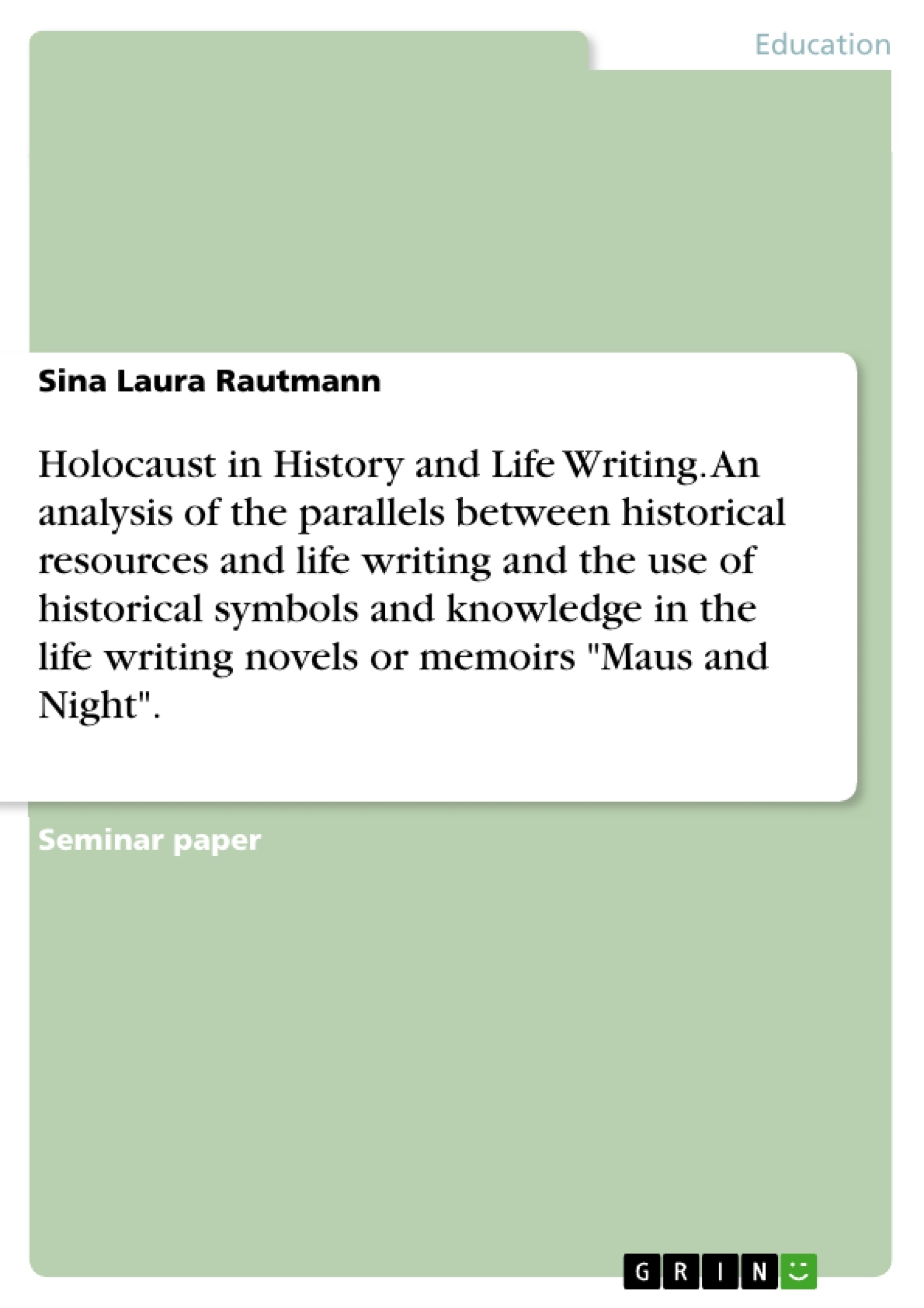“Again the Holocaust?!...” is the answer, a lot of pupils ask when the topic is brought up in school. This might derive from the way the holocaust is taught: mainly fact based without personal encounter of survivors or personal stories. A different approach could be to read novels and memoirs of holocaust survivors to bring more personal aspects into the classroom. But my hypotheses is that – in order to understand those novels – the readers need historical basic knowledge about the holocaust. I assume that memoir authors use symbols and images that refer to the happenings without further explanation. By doing this, they leave more space for personal and emotional stories that cannot be found in pure fact based books or encyclopedias about the holocaust. To get a full picture of the holocaust and understand the novels completely the reader needs to know the meaning of certain symbols for example “chimneys” or “death marches.”
In order to analyze this theory, I am going to use historical literature as a reference point to see what events are neutrally described and taught as facts. Then I will compare these facts to the novels The Complete Maus by Art Spiegelman and Night by Elie Wiesel to see whether they took time to explain the events more detailed or whether they just refer to a symbol or happening that would be counted as 'common knowledge'.
First I will give an introduction to the novels to summarize their story and highlight peculiarities and differences. In this part, I will also give an overview over the historical literature that will be the basis for this paper. In the second part I will highlight the most important facts, symbols, and images that are connected with holocaust events and recognized as general knowledge. I will explain them shortly and present passages from the books that refer to these events. In the end I will test my hypotheses and explain whether it has been proven as a true statement or not. I will present my conclusion on the importance of memoirs and historical resources for a general overview on the topic of the Holocaust and NS- regimes.
Inhaltsverzeichnis (Table of Contents)
- Introduction
- The Novels and History Books
- Night by Elie Wiesel
- The Complete Maus by Art Spiegelman
- Historical Literature for Comparison
- Analysis: Symbols and Images for Holocaust Happenings
- The beginning of the War and the Discrimination against Jews
- "ARBEIT MACHT FREI"
- Concentration Camps and Death Camps
- Registration Process and Marking
- Daily Routines at a KZ
- Mistreatment, Abuse and Terror
- Hierarchies within the Camps – “Operative Prisoners”
- Food and Living Conditions
- Selection Process
- Surviving a Concentration Camp
- „The Final Solution“ – Killing Methods and Handling of the Dead
- Deadly Showers - „Gas Chambers“
- Burning the Corpses – „Looting“ and „Chimneys“
- Mass Shootings - „Mass Graves“
- Evacuating Camps – „Death Marches“
- The Role of Prior Knowledge or Historical Research for Reading Holocaust Memoirs
- Conclusion
- Works Cited and Additional Resources
- Appendix
Zielsetzung und Themenschwerpunkte (Objectives and Key Themes)
This paper aims to analyze the parallels between historical resources and life writing by examining the use of historical symbols and knowledge in the life writing novels/memoirs Maus and Night. The author hypothesizes that understanding these novels requires prior historical knowledge about the Holocaust, as memoir authors use symbols and images that refer to events without explicit explanation, leaving space for personal and emotional narratives. The paper seeks to determine whether the novels provide detailed explanations of events or simply refer to symbols that are considered common knowledge.
- The importance of historical knowledge for interpreting Holocaust memoirs
- The use of symbols and images in life writing to represent Holocaust events
- The impact of personal experiences on Holocaust narratives
- The differences between historical accounts and personal memoirs
- The significance of Holocaust memory and its transmission to future generations
Zusammenfassung der Kapitel (Chapter Summaries)
The paper begins by introducing the novels Night and Maus, summarizing their stories and highlighting their peculiarities and differences. It also provides an overview of the historical literature that will be used as a reference point for the analysis. The next section focuses on the most important facts, symbols, and images connected with Holocaust events, explaining them briefly and presenting passages from the novels that refer to these events. The analysis compares the novels to historical accounts to determine whether they provide detailed explanations of events or simply rely on common knowledge.
Schlüsselwörter (Keywords)
The paper focuses on the key concepts of Holocaust memory, life writing, historical resources, symbolic representation, and the interrelationship between personal experiences and historical events. The analysis explores the use of symbols and imagery in both historical accounts and life writing to convey the horrors of the Holocaust, highlighting the significance of understanding these symbols to fully comprehend the experiences of survivors. The paper also examines the importance of both historical research and personal memoirs for understanding the Holocaust and its impact on individuals and communities.
- Quote paper
- Sina Laura Rautmann (Author), 2016, Holocaust in History and Life Writing. An analysis of the parallels between historical resources and life writing and the use of historical symbols and knowledge in the life writing novels or memoirs "Maus and Night"., Munich, GRIN Verlag, https://www.hausarbeiten.de/document/370039


